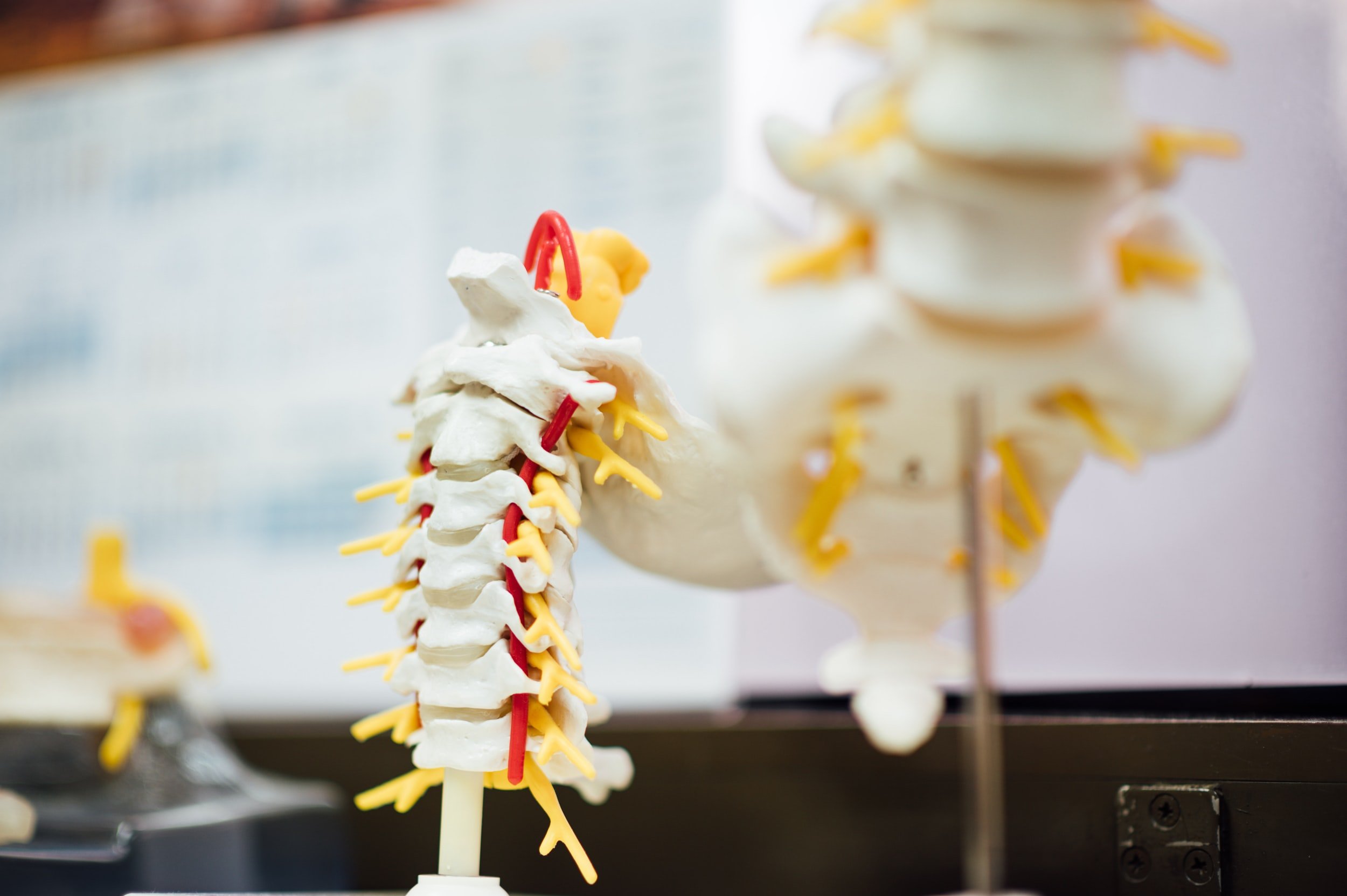Minimally Invasive procedure to treat Chronic low back pain
Chronic Back Pain
Chronic back pain is something many people live with each day. Pain can make simple routines seem impossible and can have a substantial impact on everyday life. Bone strength, muscle elasticity, and tone tend to decrease with age, causing the vertebral discs to lose fluid and flexibility, which reduces their ability to cushion the vertebrae. If the spine becomes overly strained or compressed, a disc may bulge outward or rupture, causing pressure on one of the more than 50 nerves rooted to the spinal cord, which results in increased and often severe back pain.
Do you have degenerative disc disease, spondylolisthesis, trauma, and/or a spinal tumor?
Degenerative Disc Disease (DDD) is a medical condition in which there are anatomic changes and a loss of function of varying degrees of one or more intervertebral discs of the spine of sufficient magnitude as to cause symptoms.
The root cause is thought to be loss of soluble proteins within the fluid contained in the disc with resultant reduction of the oncotic pressure, which in turn causes loss of fluid volume. Normal downward forces cause the affected disc to lose height, and the distance between vertebrae is reduced. The anulus fibrosus, the rigid outer shell of a disc, also weakens. This loss of height causes laxity of the longitudinal ligaments, which may allow anterior, posterior, or lateral shifting of the vertebral bodies, causing facet joint malalignment and arthritis; scoliosis; cervical hyperlordosis; thoracic hyperkyphosis; lumbar hyperlordosis; narrowing of the space available for the spinal tract within the vertebra; or narrowing of the space through which a spinal nerve exits inflammation and impingement of a spinal nerve, causing a radiculopathy.
The Aurora ZIP® Procedure
Dr. Rock is now performing the Aurora ZIP® procedure as a minimally invasive interspinous fixation implant for spinal fusion. The device was developed as an alternative to pedicle screw fixation, with the ZIP® implant designed for stabilization and load sharing during T1-S1 thoracolumbar fusion procedures, specifically for the treatment of degenerative disc disease, spondylolisthesis, trauma, and/or tumor.
Dr. Rock is now performing the minimally invasive Aurora ZIP procedure on select patients with chronic spine pain. Here is a video of the procedure.
The proprietary Aurora ZIP ONE-STEP™ locking mechanism eliminates the use of a set screw. Each ZIP® LP implant features a large barrel designed for ZIP GRAFT™ or other bone material. The ZIP® LP is designed in various sizes to accommodate variations in patient anatomy. The ZIP® LP is designed with a plate width of 3.5mm.
The surgery is done through a minimally invasive incision in the back of the patient and the physician dissects tissue and muscle off spinous processes. After completing site preparation the doctor places the ZIP implant on the spine and ratchets the two sides of the implant together for a full closure.

